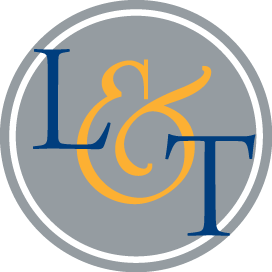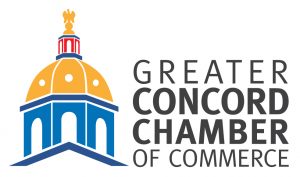
Takeaways
-
Nursing home care costs have been rising over time, with many older Americans who require long-term care unable to afford it.
-
With proper planning, seniors may be able to rely on Medicaid to pay for this care – and still retain some of their assets – by exploring several different strategies.
The aging U.S. population means that more people will likely need nursing home care in the coming decades. Meanwhile, the cost of nursing home care is increasing — and expected to keep increasing.
With the exorbitant cost of nursing home care, many families worry about depleting their loved ones’ life savings to pay for the care they need. Private health insurance does not cover nursing home care, and while long-term care insurance is available to cover nursing home costs, these plans are also expensive and may come up short for long-term stays.
This leaves millions of Americans reliant on Medicaid to pay for nursing home care — a far from perfect solution that usually involves spending down assets to qualify. With proactive Medicaid planning, though, it is possible for someone to qualify for Medicaid and still retain some of their assets. The sooner you start planning, the more options you’ll have for protecting your parents’ assets from nursing home costs.
Odds of Needing Long-Term Care Are High
The lifetime likelihood of needing nursing home care is relatively high. About 70 percent of people who turn 65 today will eventually need some type of long-term care, including nursing home care.
About 1.3 million Americans aged 65 and older currently live in nursing homes, and about 40 percent of today’s 65-year-olds will spend some time in a nursing home before the end of their lives.
Women are more likely than men to need long-term care, and the older a person gets, the more likely they are to need it. At the same time, there has been a growing trend of younger adults (those under the age of 65) living in nursing homes, in part due to Medicaid eligibility expansion under the Affordable Care Act. Research shows that this group increased from 10.6 percent of total nursing home residents in 2000 to 16.2 percent in 2017.
Medicaid expansion has led to more people of all ages qualifying for the joint federal and state health insurance program. Intended as the “payer of last resort” when it comes to long-term care, Medicaid has become the primary nursing home insurance for millions of Americans due to the absence of any other public program covering long-term care.
In 2020, around 6 million Medicaid enrollees used the program to pay for long-term support and services. Around one in five enrollees received institutional care, such as care provided at a nursing facility.
After age 65, more than a quarter of adults receive at least 90 days of nursing home care. Thirteen percent of them receive long-term Medicaid-financed nursing home care.
Medicaid typically pays for 100 percent of nursing home costs and may be the only insurance option available for long-term stays. Long-term care insurance can be purchased, but most policies have limits on the maximum daily or monthly benefit amount and the total lifetime benefit, as well as terms and health requirements that may exclude coverage.
A nursing home stay isn’t necessarily permanent. About 15 percent to 20 percent of admissions are for short-term rehabilitation. Among current residents, the average stay is one year and four months. More than half of residents stay for at least 100 days, while 15 percent of older adults spend over two years in a nursing home.
With nursing home costs running $250 to $300 per day in some states, costs can add up quickly. The average nursing home stay of little over a year, or about 485 days, could end up costing upwards of $150,000.
Extrapolate these costs over multiple years, and they are unsustainable for many families.
Medicaid Planning Strategies
Whether a nursing home stay lasts months, years, or is permanent, you may have crunched the numbers and determined that Medicaid is the only feasible payment option for a parent’s nursing home care.
This is a “good news, bad news” scenario. The good news is that it’s possible for somebody who doesn’t currently meet Medicaid’s income and asset limits to “spend down” their excess assets to meet limits. The bad news is that these limits are generally only $2,000, which requires significant planning, since the average net worth of Americans is more than $1 million, including nearly $1.8 million for those 65 to 74.
Another upside is that not all a person’s assets count against the limit. A home, for example, is typically exempt. Someone can also own one car without exceeding Medicaid’s asset limits.
Many Medicaid spend down strategies take advantage of workarounds that allow nonexempt assets to be converted to exempt assets, thereby excluding them from Medicaid calculations. But these strategies often involve navigating a tricky five-year “lookback period” where past asset transfers are scrutinized to ensure applicants don’t give away assets to qualify for Medicaid.
Keeping these considerations in mind, there are financial planning strategies that can help to protect a parent’s assets from nursing home costs and a Medicaid spend down.
Medicaid-Compliant Annuities (MCAs)
MCAs, a type of single premium immediate annuity, allow countable assets (like cash or investments) to be converted into a stream of income that doesn’t count toward the Medicaid asset limit. The payout structure must be based on life expectancy, and once purchased, the annuity cannot be cashed out or changed; funds in the annuity are no longer accessible as assets.
Annuity income may affect your parents’ eligibility for other needs-based government programs, such as Supplemental Security Income (SSI). In addition, the state Medicaid agency must be the primary beneficiary in case of the annuitant’s death during the annuity period.
Medicaid Asset Protection Trusts (MAPTs)
Medicaid-compliant trusts, like MAPTs, hold assets for a set period, after which they transfer to beneficiaries (usually children or other family members).
Assets in the MAPT are no longer considered part of your parents’ estate for Medicaid purposes. They are legally owned by the trust, not your parents, although they may be able to benefit from these assets, such as remaining in a home transferred to a MAPT.
Creating a MAPT triggers a penalty period of Medicaid ineligibility under the lookback period that’s based on the value of assets transferred. A MAPT is therefore most effective when implemented well in advance of potential Medicaid need, often in conjunction with a parent’s estate plan.
Promissory Notes
A promissory note is a legal agreement that allows your parents to lend money to someone (e.g., a family member) who agrees to repay the money with interest over time. This converts a lump-sum asset into a stream of income.
Not all states recognize promissory notes for Medicaid planning. In states that do allow them, they may be subject to scrutiny by state Medicaid agencies. The note must clearly outline the repayment terms and the interest rate must be at or above the applicable federal rate (the minimum interest rate the IRS allows for private loans).
Interest income from the loan may be taxed at a lower rate, and the terms can be customized to meet individual needs. For the Medicaid applicant, however, the effectiveness of a promissory note is largely dependent on the borrower’s ability and willingness to repay the loan.
Life Estates
A life estate lets your parents transfer ownership of their home to a child or other family member while retaining the right to live there for the rest of their lives. It removes the home’s value from their countable assets for Medicaid purposes and may protect the family home from Medicaid estate recovery, a program that empowers states to recoup Medicaid expenses from the deceased beneficiary’s estate.
Medicaid’s lookback policy applies to life estates, so the transfer must be done well in advance of needing care. Your parents may also lose some control over the property, and there could be tax implications.
Other Spend Down Strategies
A spend down strategy might additionally include a parent spending on needs or wants that can both enhance their quality of life and help them qualify for Medicaid.
- Paying off debts, making necessary home repairs, purchasing a new car, prepaying funeral expenses, or taking a family vacation are ways to spend down assets and derive an instant benefit.
- Gifting assets to loved ones outside of the lookback period can reduce countable assets and fit into a gifting while living strategy, but annual and lifetime gift tax exemptions apply.
- If only one spouse needs nursing home care, Medicaid allows the other spouse (the “community spouse”) to retain a certain amount of income and assets.
Because state Medicaid laws and individual nursing home care needs vary, there is no “one-size-fits-all” strategy for protecting a parent’s assets from nursing home costs and a Medicaid spend down. To develop a personalized plan that avoids penalties or disqualification from Medicaid in your state and also maximizes asset protection, consult with a local elder law attorney.


